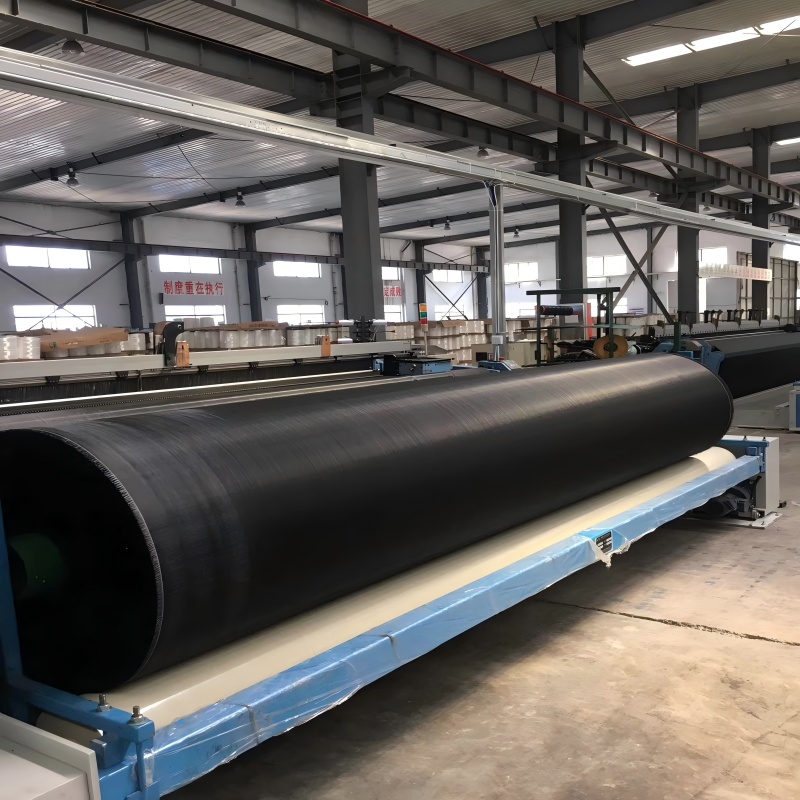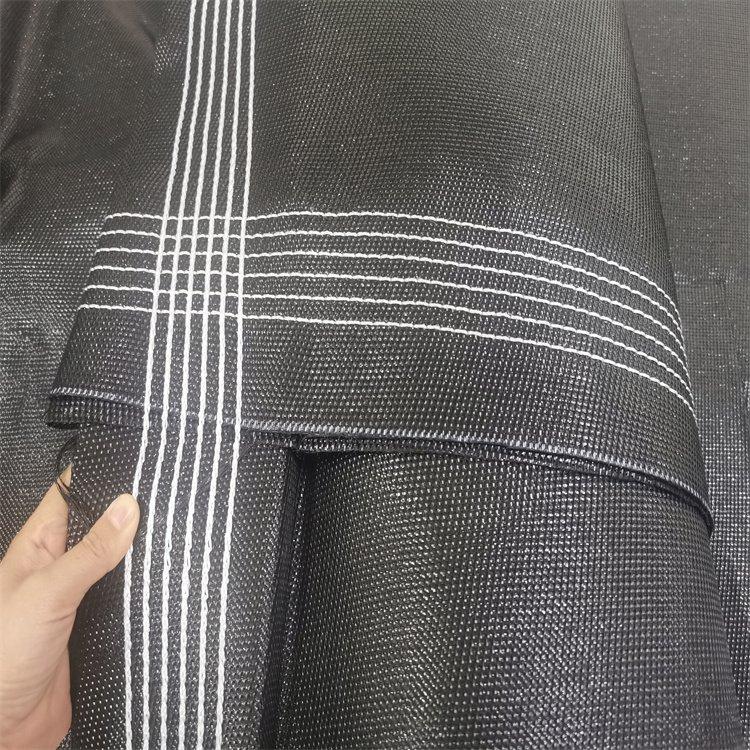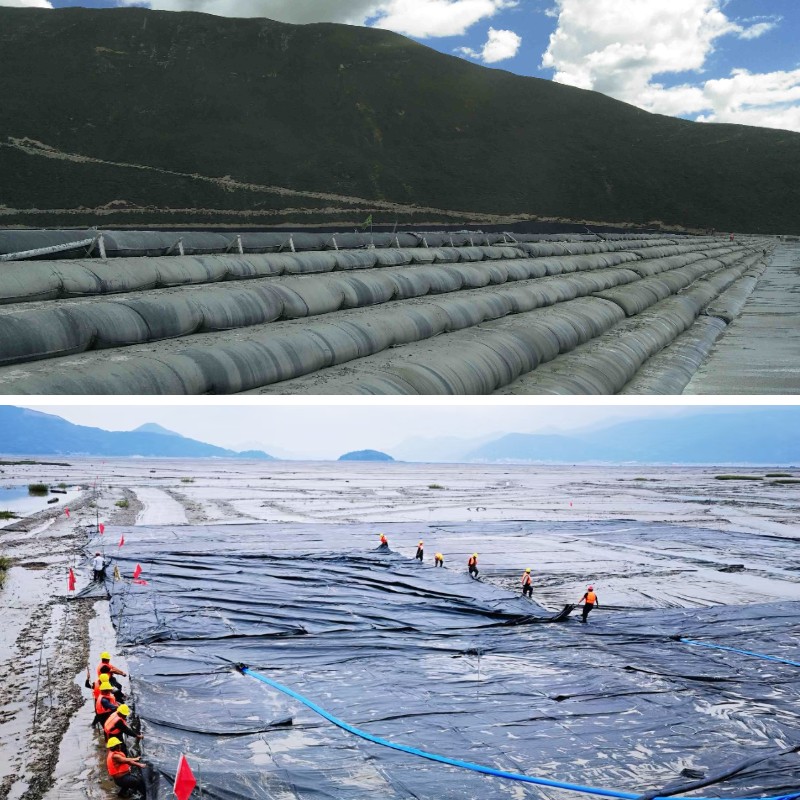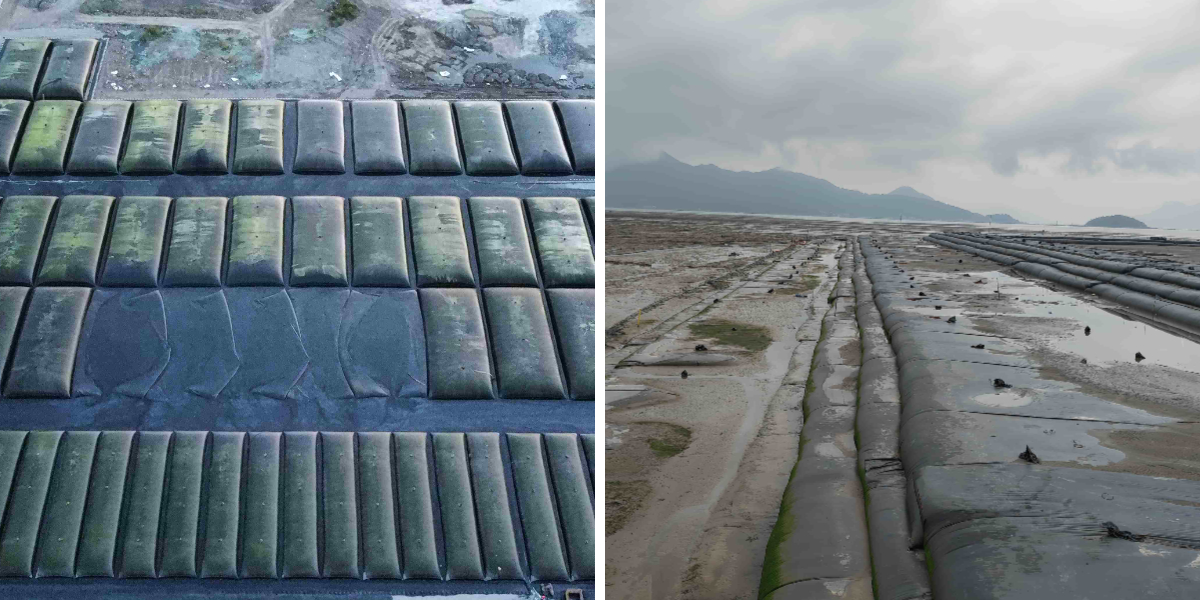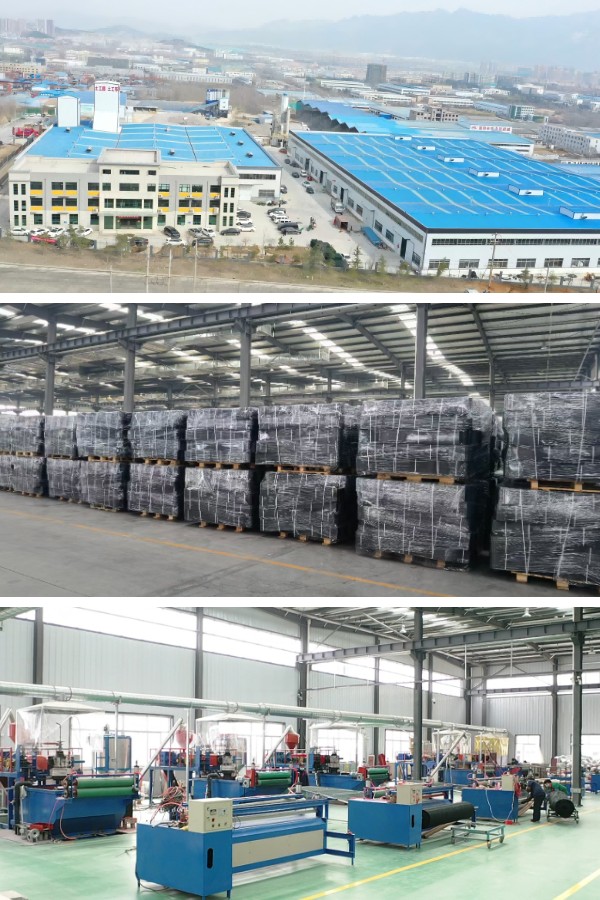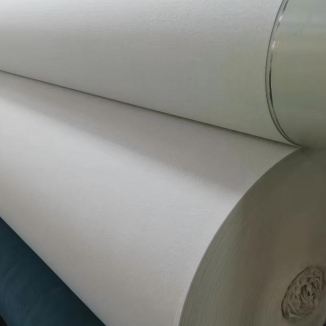Dewatering Filter Bag
1. Efficient dewatering and consolidation: Using permeable fabrics to wrap mud, water can quickly seep out through gravity or pump pressure, greatly reducing the volume of sludge, dredged soil, etc., achieving rapid dewatering and solidification.
2. Simple and economical construction: The required equipment is simple, and on-site construction is possible without the need for large sedimentation tanks or long-distance transportation, significantly reducing treatment costs and energy consumption.
3. Environmentally friendly: Suspended solids and pollutants are effectively trapped in the bag during the dehydration process, avoiding secondary pollution; After treatment, clean water can be discharged back, and solid materials can be recycled or safely buried.
4. Strong adaptability: The size and shape can be customized according to project requirements, suitable for various types of mud and sludge, and the site selection is flexible.
Product Introduction:
Dewatering Filter Bag is a large tubular flexible container made of high-strength geotextile (usually polypropylene PP or polyester PET) sewn together. The core technical principle is "filtration dewatering consolidation": liquid mud (such as silt, sludge, tailings, etc.) is filled into a bag with pump pressure. Under the pressure, water is effectively precipitated through the tiny pores of the geotextile, while solid particles are trapped in the bag, thereby achieving rapid dewatering, consolidation, and significant volume reduction of the mud. It is essentially a processing tool for converting fluid waste into solid materials.
Feature
1. Material characteristics:
High strength and durability: Made of high-strength woven or composite geotextiles, it has excellent tensile, puncture and UV resistance, and can withstand pumping pressure and huge tension after filling.
Controllable permeability and soil retention: The pore size of the fabric is precisely designed to ensure that water can be quickly filtered out, while effectively intercepting target solid particles to prevent material loss. Geotextiles with different pore sizes can be selected based on the particle size distribution of the processed materials.
Chemical corrosion resistance: Polypropylene and polyester materials have good resistance to chemicals such as acids, alkalis, and salts, and are suitable for treating various complex industrial sludge.
2. Structural form:
For large cylindrical tubular structures, there are usually specially designed filling ports at both ends. Its size is flexible and versatile, with a diameter ranging from 0.5 meters to several meters, and a length that can be customized according to engineering needs, usually ranging from 30 meters to 100 meters, or even longer. After filling, it forms a continuous sausage or pillow shape.
3. Engineering characteristics:
Construction Integration: Integrating the three steps of "filling, dehydration, and stacking/forming" into one, with a compact process and high efficiency.
Flexible structure: As a flexible structure, it can adapt well to uneven settlement of the foundation and has good seismic performance.
Visual monitoring: The dehydration process is visible, the effect is intuitive, and it is easy to monitor and manage.
Product Parameters:
project | unit | CWGD50S | CWGD90/120 | CWGD90S | CWGD100S | CWGD120S-B | CWGD120S-C | CWGD130S | CWGD200S-C | |
Tensile strength-radial | kN/m | 55 | 90 | 90 | 100 | 130 | 130 | 130 | 220 | |
Tensile strength-Weft | 50 | 120 | 90 | 100 | 120 | 120 | 130 | 210 | ||
Strain elongation-radial | % | 16±1 | 12±1 | 9±1 | 10±1 | 10±1 | 10±1 | 10±1 | 12±1 | |
Extensional elongation-Weft | 10±1 | 8±1 | 8±1 | 8±1 | 8±1 | 8±1 | 8±1 | 8±1 | ||
Breakage strength at 2% elongation | warp direction | kN/m | 5/15 | 14/40 | 30/30 | 30/30 | 20/40 | 22/40 | 20/45 | 15 |
Breakage strength at 5% elongation | warp direction | kN/m | 14/33 | 38/90 | 75/75 | 75/75 | 80/100 | 84/40 | 80/110 | 90 |
mass area ratio | g/m² | 285 | 440 | 390 | 430 | 540 | 540 | 560 | 850 | |
Joint tensile strength | kN/m | 35 | 90 | 60 | 70 | 100 | 100 | 110 | 170 | |
Static Burst Strength (CBR) | KN | 5 | 10 | 10 | 13 | 15 | 15 | 16 | 22 | |
Dynamic perforation | mm | 10 | 8 | 12 | 12 | 10 | 10 | 11 | 8 | |
Equivalent aperture (0g0) | mm | 0.9 | 0.48 | 0.52 | 0.45 | 0.4 | 0.3 | 0.43 | 0.4 | |
Permeability (Q50) | L/m²/s | 200 | 40 | 20 | 15 | 12 | 6.5 | 15 | 15 | |
Ultraviolet resistance (500h strong storage rate ) | % | 90 | 90 | 85 | 85 | 85 | 85 | 85 | 85 | |
Product Applications:
1. Water conservancy, environmental protection, and dredging engineering:
Dredging of rivers, lakes, and ports is one of the most economical and effective methods for treating dredged silt, widely used in projects such as urban black and odorous water treatment and channel expansion.
2. Industrial and municipal sludge treatment:
Wastewater treatment plant sludge: treats municipal sludge and industrial wastewater sludge (such as papermaking, printing and dyeing, chemical, food processing, etc.).
Industrial slag slurry: Processing waste residue and slurry generated from various industrial production processes.
3. Mining and Energy Engineering:
Tailings treatment: Used for the dewatering and dry stacking of tailings such as metal mines and phosphate mines, it is a key technology to replace traditional tailings ponds and prevent the risk of tailings dam failure (known as "tailings pipe bag dewatering and stacking technology").
Drilling mud treatment: Treatment of waste mud generated during oil and gas drilling processes.
4. Agriculture and Livestock Industry:
Livestock and poultry manure treatment: Dehydration treatment of manure from large-scale breeding farms.
Pond sediment cleaning: Treatment of clear sediment from aquaculture ponds.
5. Geotechnical and Coastal Engineering:
Soft foundation reinforcement and cofferdam construction: The filled geotextile bags can be used as temporary or permanent embankments, cofferdams, breakwater core materials, or shore protection structures.
Reclamation and ecological restoration: It is used for soft foundation treatment and filling materials in coastal zone mudflat reclamation, artificial island construction, and also for the restoration of contaminated beach land.
In summary, geotextile bag technology is an innovative engineering technology that integrates efficiency, economy, environmental protection, and multifunctionality. It successfully combines geotechnical engineering, environmental engineering, and textile technology, providing an excellent solution to the global problem of large-scale fluid waste dewatering treatment, and playing an irreplaceable role in modern engineering construction and environmental governance.



